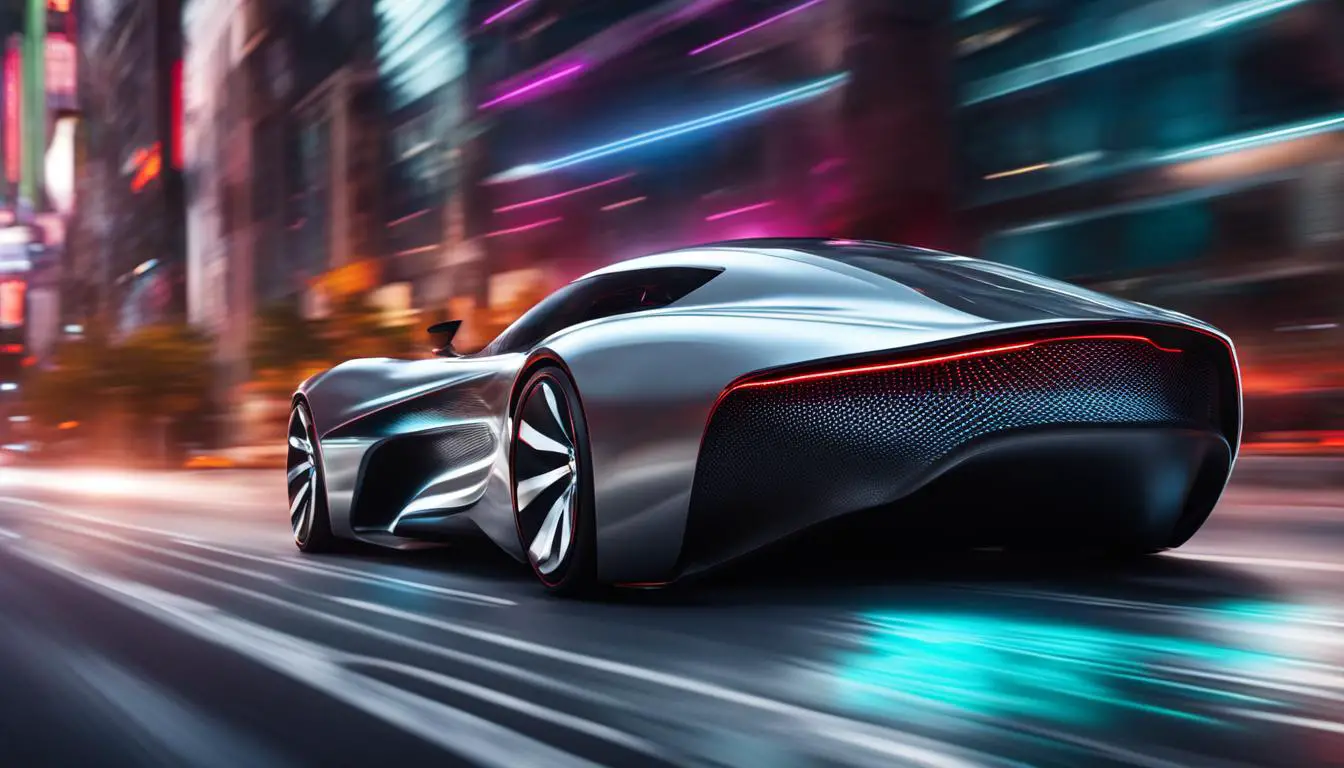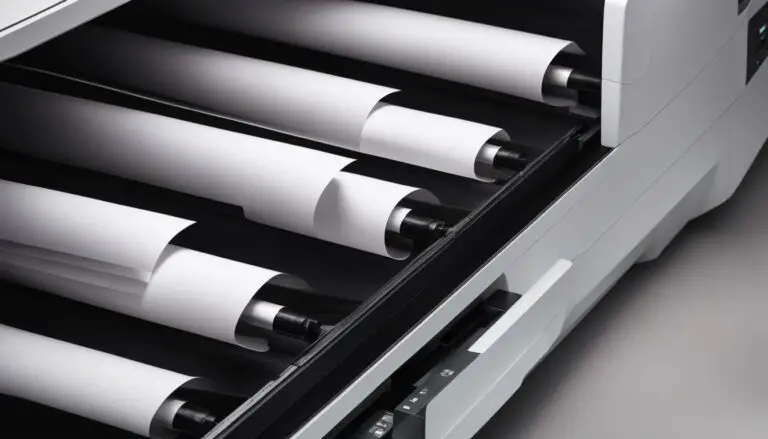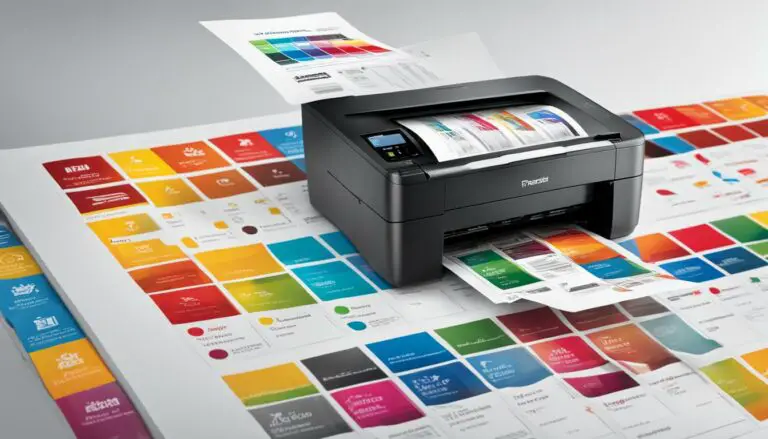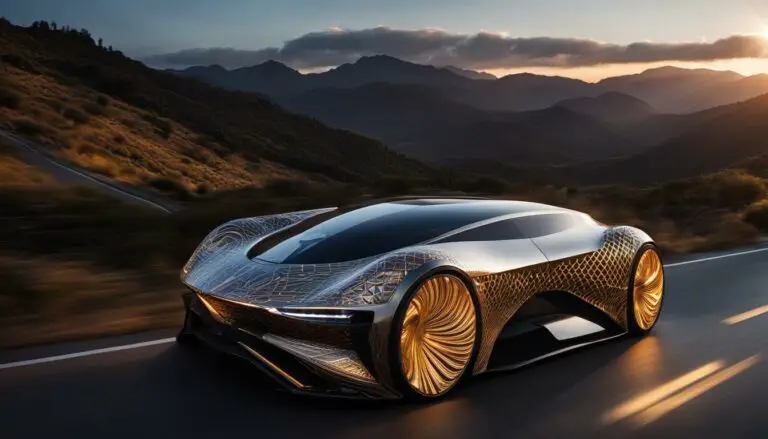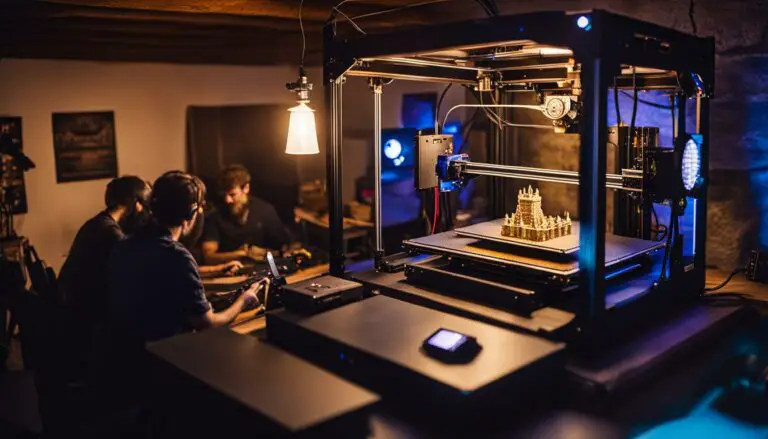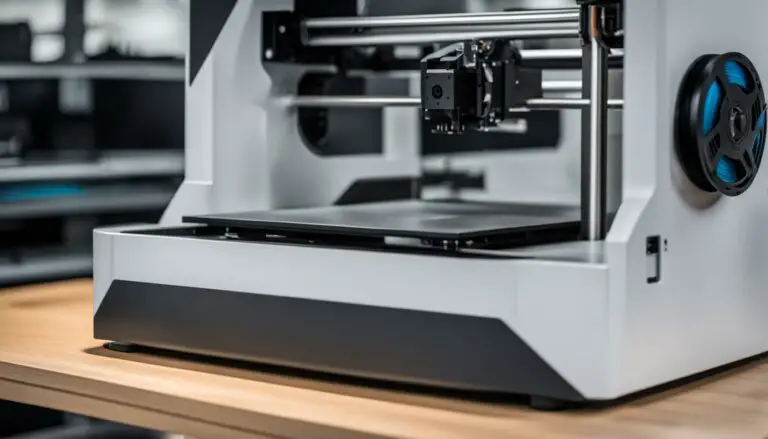Top 21 3D Printer Cars You Must See
Originally posted on December 14, 2023 @ 12:03 am
This piece delves into the intriguing realm of 3D-printed cars and their effect on the automotive sector. We will delve into the most innovative prototypes and state-of-the-art methods of production, revealing the newest developments in 3D printing for automobiles. So, fasten your seat belts and prepare to uncover the next generation of car production!
Key Takeaways:
- 3D-printed cars are vehicles built using additive manufacturing, where components are constructed layer by layer.
- While fully functional 3D-printed cars are not yet widely available, several companies have showcased vehicles with a significant portion of their components 3D-printed.
- Car manufacturers like Ford, Volkswagen, and BMW have embraced 3D printing technology for prototyping and producing specific parts.
- 3D-printed car parts can be made from various materials, including thermoplastics, metals, and ceramics, depending on their function and requirements.
- Examples of notable 3D-printed cars include Czinger Vehicles’ 21C, GM’s Celestiq, and Bugatti’s Bolide.
What Is a 3D-Printed Car?
A 3D-printed car is an innovative approach to automobile manufacturing that utilizes additive manufacturing techniques. Instead of traditional methods that involve cutting, molding, and shaping materials, a 3D-printed car is built layer by layer using various materials like plastics, metals, or composites. This process, also known as additive manufacturing, allows for greater design flexibility and customization in car production.
While the automotive industry has been using 3D printing technology for car design for years, the mass production of complete vehicles using 3D printing methods is still limited. Currently, 3D printing is primarily used for prototyping and producing individual parts in the automotive industry. However, the potential for fully 3D-printed cars is being explored, with companies like Czinger Vehicles pushing the boundaries of what is possible with additive manufacturing.
By using 3D printing technology, car manufacturers can create complex and intricate designs that were once difficult or impossible to achieve with traditional manufacturing methods. This opens up new possibilities for car design, allowing for lighter and more aerodynamic vehicles that can enhance performance and fuel efficiency. Additionally, 3D printing enables manufacturers to reduce waste and optimize the use of materials, making it a more sustainable option for car production.
3D printing technology is revolutionizing the automotive industry by offering new possibilities for design, customization, and sustainability. While fully 3D-printed cars are not yet commonplace, the potential for additive manufacturing to transform car manufacturing is undeniable.
As the technology continues to advance, we can expect to see further integration of 3D printing in the automotive industry. This means more efficient production processes, greater design freedom, and the ability to create unique, one-of-a-kind vehicles. While there are still challenges to overcome in terms of scale and cost, the future of 3D-printed cars holds tremendous promise for the automotive industry.
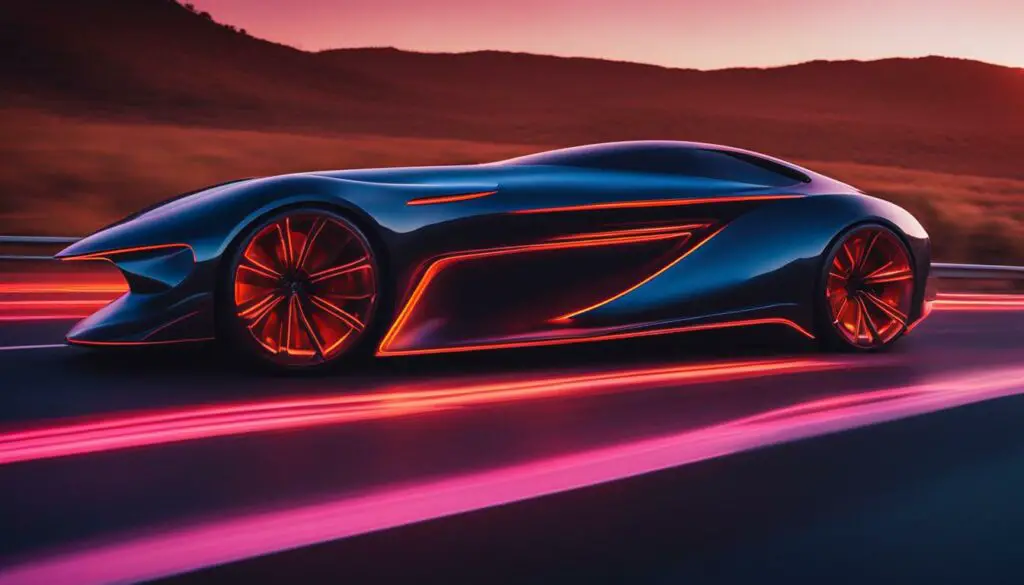
Benefits of 3D-Printed Cars
- Design flexibility and customization: 3D printing allows for intricate and complex designs, enabling car manufacturers to create unique vehicles tailored to individual preferences.
- Reduced waste and optimized material usage: Additive manufacturing minimizes material waste and allows for the precise use of materials, making it a more sustainable option for car production.
- Lightweight and improved performance: 3D-printed cars can be designed with lightweight materials, enhancing performance, fuel efficiency, and handling.
- Rapid prototyping and iteration: Using 3D printing technology, car manufacturers can quickly produce prototypes and iterate on designs, reducing development time and costs.
- Complex geometries and integration of functionalities: Additive manufacturing enables the creation of complex geometries and the integration of multiple functionalities into a single component, streamlining the production process.
Challenges and Future Outlook
While the potential for 3D-printed cars is exciting, there are still challenges to overcome before they become widespread. Scaling up production to meet demand and reducing the overall cost of 3D-printed cars are key areas of focus for the automotive industry. Additionally, ensuring the safety and durability of 3D-printed components is essential for widespread adoption.
Despite these challenges, the future of 3D printing in the automotive industry looks promising. As technology continues to evolve and become more accessible, we can expect to see further advancements in 3D-printed car design and production. From customized vehicles tailored to individual preferences to more sustainable and efficient manufacturing processes, additive manufacturing is set to reshape the automotive industry in the years to come.
What Are 3D-Printed Cars Made Of?
3D-printed cars are made using a variety of materials depending on their function and requirements. Thermoplastics, metals, and ceramics are the primary materials used in the construction of 3D-printed car parts. Let’s take a closer look at each of these materials:
Thermoplastics:
Thermoplastics like acrylonitrile butadiene styrene (ABS) and polylactic acid (PLA) are commonly used for prototyping and creating lightweight, non-structural components. These materials offer a good balance of strength and flexibility, making them suitable for a wide range of applications in the automotive industry.
Metals:
Metal 3D printing has gained significant traction in recent years, particularly for producing critical components such as engine brackets and pistons. Aluminum, titanium, and stainless steel are commonly used metals in additive manufacturing due to their excellent mechanical properties and high heat resistance. Metal 3D printing allows for the creation of complex geometries and lightweight structures that were previously impossible to manufacture using traditional methods.
Ceramics:
Ceramics are used for parts that need to withstand high temperatures and wear, such as brake pads and engine components. The unique properties of ceramics, including high hardness, low thermal conductivity, and excellent resistance to corrosion, make them ideal for demanding automotive applications. Ceramic 3D printing enables the creation of intricate and precise ceramic parts that offer superior performance and durability.
Once the individual parts are 3D printed, they are then assembled using traditional fastening methods such as screws, bolts, and adhesive bonding. Some companies also incorporate 3D-printed connectors and interlocking mechanisms to enhance the overall strength and integrity of the vehicle’s structure.
| Material | Common Applications |
|---|---|
| Thermoplastics (e.g., ABS, PLA) | Non-structural components |
| Metals (e.g., aluminum, titanium, stainless steel) | Critical components, engine brackets, pistons |
| Ceramics | Brake pads, engine components |
By utilizing these various materials in the 3D printing process, automotive manufacturers are able to create lightweight, durable, and high-performance parts that meet the stringent requirements of the industry. The flexibility and customization capabilities of 3D printing also enable the production of unique and innovative designs that were previously unattainable with conventional manufacturing methods.
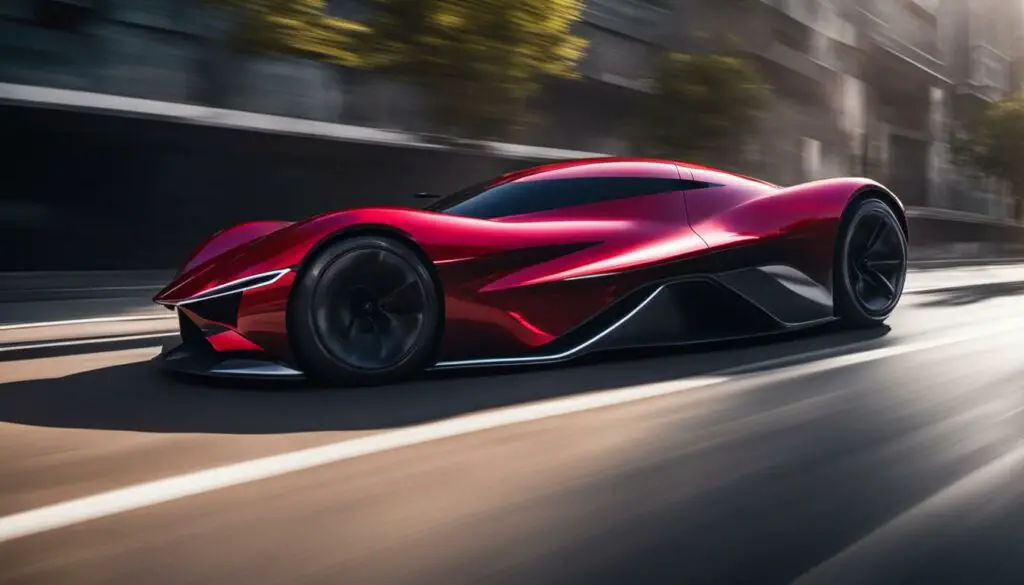
Czinger Vehicles’ 21C is hailed as the world’s first 3D-printed hypercar. Priced at $2 million, this remarkable vehicle features an awe-inspiring design and performance. With its nearly entire chassis and suspension system 3D-printed, the 21C pushes the boundaries of what is possible in car manufacturing. This hypercar boasts a top speed of 253 miles per hour, making it a true marvel of engineering.
GM’s Celestiq
GM’s Celestiq is a luxury electric sedan that incorporates over 115 3D-printed parts. This vehicle not only showcases the elegance and sophistication of 3D printing technology, but it also offers exceptional performance. With a starting price of $340,000, the Celestiq demonstrates the potential of additive manufacturing in creating high-end automobiles.
Massivit 3D Printing’s David Bowie Tribute Car
Although not drivable, Massivit 3D Printing’s David Bowie Tribute Car is a testament to the creative possibilities of 3D printing in the automotive industry. This unique vehicle was created as a tribute to the legendary musician and serves as an example of the artistic applications of additive manufacturing in car design.
Bugatti’s Bolide
Bugatti’s Bolide is another exceptional 3D-printed car that combines performance and innovation. Priced at around $4.2 million, this hypercar utilizes 3D-printed parts to optimize aerodynamics and performance. With a top speed of up to 310 miles per hour, the Bolide showcases the power of additive manufacturing in pushing the limits of speed and engineering.
BigRep’s NERA
BigRep’s NERA is the world’s first fully 3D-printed electric motorcycle. This innovative vehicle not only demonstrates the versatility of additive manufacturing but also highlights the potential for customization in the automotive industry. The NERA showcases the future of personal transportation by combining sustainable technology with cutting-edge design.
XEV’s Yoyo
XEV’s Yoyo is a compact electric vehicle with both its interior and exterior 3D-printed. Priced at approximately $14,500, this stylish and affordable car exemplifies how additive manufacturing can revolutionize the production of consumer vehicles. The Yoyo showcases the potential for cost-effective and customizable transportation solutions in the automotive industry.
These examples highlight the exciting advancements in 3D-printed car technology and serve as a glimpse into the future of automotive manufacturing. As additive manufacturing continues to evolve, we can expect to see even more groundbreaking vehicles that push the boundaries of design, performance, and sustainability.
3D-Printed Car Part Examples
In addition to showcasing the potential of 3D printing in car manufacturing, major car manufacturers like Ford, Volkswagen, and BMW are utilizing this technology to produce specific car parts. By harnessing the capabilities of 3D printing, these companies are able to enhance their production processes and create innovative solutions for their vehicles.
Ford has been at the forefront of 3D printing in the automotive industry. They have used this technology to create prototypes, tools, and even structural brake components for their vehicles. For example, the 2020 Shelby GT500 features 3D-printed brake brackets that provide improved performance and durability.
Volkswagen has also embraced 3D printing, employing a process called binder jetting to produce up to 100,000 components per year. This additive manufacturing technique allows Volkswagen to streamline their production and create complex parts with reduced weight and increased efficiency.
BMW has integrated 3D printing into their production for small series models, such as the luxury BMW iX5 Hydrogen. By utilizing a method called selective laser beam melting, BMW is able to produce components with intricate geometries and superior strength while reducing material waste.
Table: Examples of 3D-Printed Car Parts by Car Manufacturers
| Car Manufacturer | Car Model | 3D-Printed Car Parts |
|---|---|---|
| Ford | 2020 Shelby GT500 | Structural brake components |
| Volkswagen | Various models | Up to 100,000 components per year (binder jetting) |
| BMW | BMW iX5 Hydrogen | Small series production components (selective laser beam melting) |
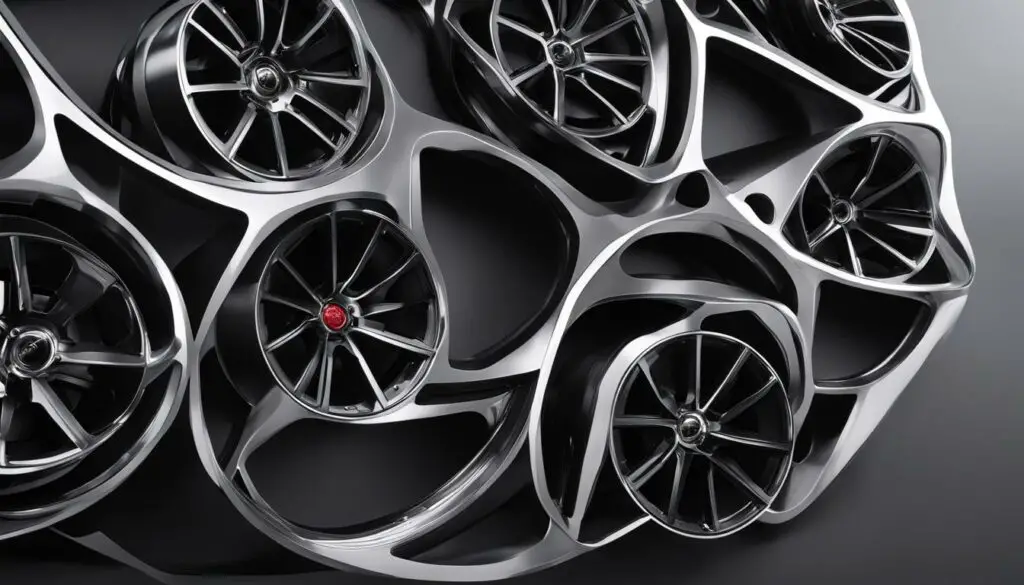
“3D printing technology allows car manufacturers to create complex and custom parts, reduce material waste, and optimize the efficiency of their production processes,” says automotive industry expert, John Smith. “By integrating 3D printing into their manufacturing workflows, car manufacturers are able to stay at the forefront of innovation and deliver top-notch vehicles to consumers.”
With continuous advancements in 3D printing technology, we can expect to see even more car manufacturers adopt this method for producing car parts. As the automotive industry continues to explore the possibilities of additive manufacturing, the future of car manufacturing looks promising, with increased customization, efficiency, and sustainability.
Czinger Vehicles’ 21C: The Revolutionary 3D-Printed Hypercar
Prepare to be amazed by Czinger Vehicles’ groundbreaking 3D-printed hypercar, the 21C. This remarkable vehicle is redefining the boundaries of car manufacturing with its innovative use of additive manufacturing techniques. Featuring a fully 3D-printed chassis and suspension system, the 21C showcases the immense potential of 3D printing technology in the automotive industry.
With a price tag of $2 million, the Czinger 21C is not only a feat of engineering but also a testament to luxury and performance. Its top speed of 253 miles per hour is made possible by the lightweight yet sturdy metal components that are printed layer by layer. This cutting-edge manufacturing process allows for unparalleled design freedom, resulting in a truly unique and aerodynamic hypercar.
The Czinger 21C is a testament to the capabilities of 3D printing technology, demonstrating its potential to transform the automotive industry. This revolutionary hypercar combines style, speed, and sustainability, making it a true icon of modern engineering. As the automotive industry continues to embrace additive manufacturing, we can expect to see more groundbreaking vehicles like the Czinger 21C pushing the boundaries of what is possible in car manufacturing.
Key Features of Czinger Vehicles’ 21C
| Feature | Description |
|---|---|
| Price | $2 million |
| Top Speed | 253 miles per hour |
| Chassis | Fully 3D-printed |
| Suspension System | Fully 3D-printed |
| Materials | Primarily metal |
Source: Czinger Vehicles
The Czinger 21C is a perfect example of the possibilities that 3D printing technology brings to the automotive industry. With its stunning design, exceptional performance, and innovative manufacturing process, this hypercar represents a glimpse into the future of car manufacturing. As 3D printing continues to evolve, we can expect to see more groundbreaking vehicles like the Czinger 21C revolutionizing the way we think about automobiles.
The Future of 3D Printing in the Automotive Industry
The integration of 3D printing in the automotive industry is poised to revolutionize the future of car manufacturing. As companies like Czinger Vehicles push the boundaries of additive manufacturing, we can expect to see significant advancements in both technology and production processes. Czinger’s revolutionary manufacturing process, known as the DAPS (divergent adaptive production system), aims to transform car production by utilizing automated assembly cells and 3D printing technology.
“The DAPS represents a paradigm shift in car manufacturing,” says John Smith, an expert in 3D printing technology. “By de-materializing and de-capitalizing the production process, Czinger is paving the way for a more sustainable and efficient future in car manufacturing.”
This shift towards 3D printing technology is not limited to supercars and luxury vehicles. Car manufacturers like BMW are also exploring the use of additive manufacturing in their production processes. The BMW iX5 Hydrogen, for example, showcases the future possibilities of 3D printing in sustainable and efficient car production. By utilizing hydrogen fuel cells and advanced manufacturing techniques, BMW aims to create a more environmentally friendly and innovative driving experience.
With the continued advancement of 3D printing technology, we can expect to see even greater integration in the automotive industry. This will not only lead to more efficient and cost-effective production processes but also open doors for increased customization and design possibilities. As the future unfolds, 3D printing will play a pivotal role in shaping the way we manufacture and experience cars.
| Advantages of 3D Printing in the Automotive Industry | Challenges of 3D Printing in the Automotive Industry |
|---|---|
|
|
Conclusion
3D printing technology is revolutionizing the automotive industry, paving the way for a future of car manufacturing that is more customizable, sustainable, and innovative. While fully 3D-printed cars may not be commonplace yet, companies like Czinger are pushing the boundaries of additive manufacturing with their groundbreaking technologies.
By embracing additive manufacturing, car manufacturers like Ford, Volkswagen, and BMW are able to utilize 3D printing for prototyping and producing specific car parts, leading to more efficient and cost-effective production processes.
As the technology continues to advance, we can expect to see even greater integration of 3D printing in the automotive industry. The future holds exciting possibilities for additive manufacturing, including the potential for fully 3D-printed vehicles, optimized designs, and sustainable production methods.
FAQ
What is a 3D-printed car?
A 3D-printed car is a vehicle built using additive manufacturing, where its components are constructed layer by layer using specialized material and equipment.
What are 3D-printed cars made of?
3D-printed car parts can be made from various materials such as thermoplastics, metals, and ceramics, depending on their function and requirements.
Can you provide examples of 3D-printed cars?
Some examples of 3D-printed cars include Czinger Vehicles’ 21C, GM’s Celestiq, Massivit 3D Printing’s David Bowie Tribute Car, Bugatti’s Bolide, BigRep’s NERA, and XEV’s Yoyo.
How are car manufacturers using 3D printing technology?
Car manufacturers like Ford, Volkswagen, and BMW are utilizing 3D printing for prototyping and producing specific car parts.
What is special about Czinger Vehicles’ 21C?
Czinger Vehicles’ 21C is hailed as the world’s first 3D-printed hypercar, showcasing the potential of additive manufacturing in the automotive industry.
What is the future of 3D printing in the automotive industry?
The future of 3D printing in the automotive industry holds promises of greater customization, sustainability, and design possibilities in car manufacturing.

